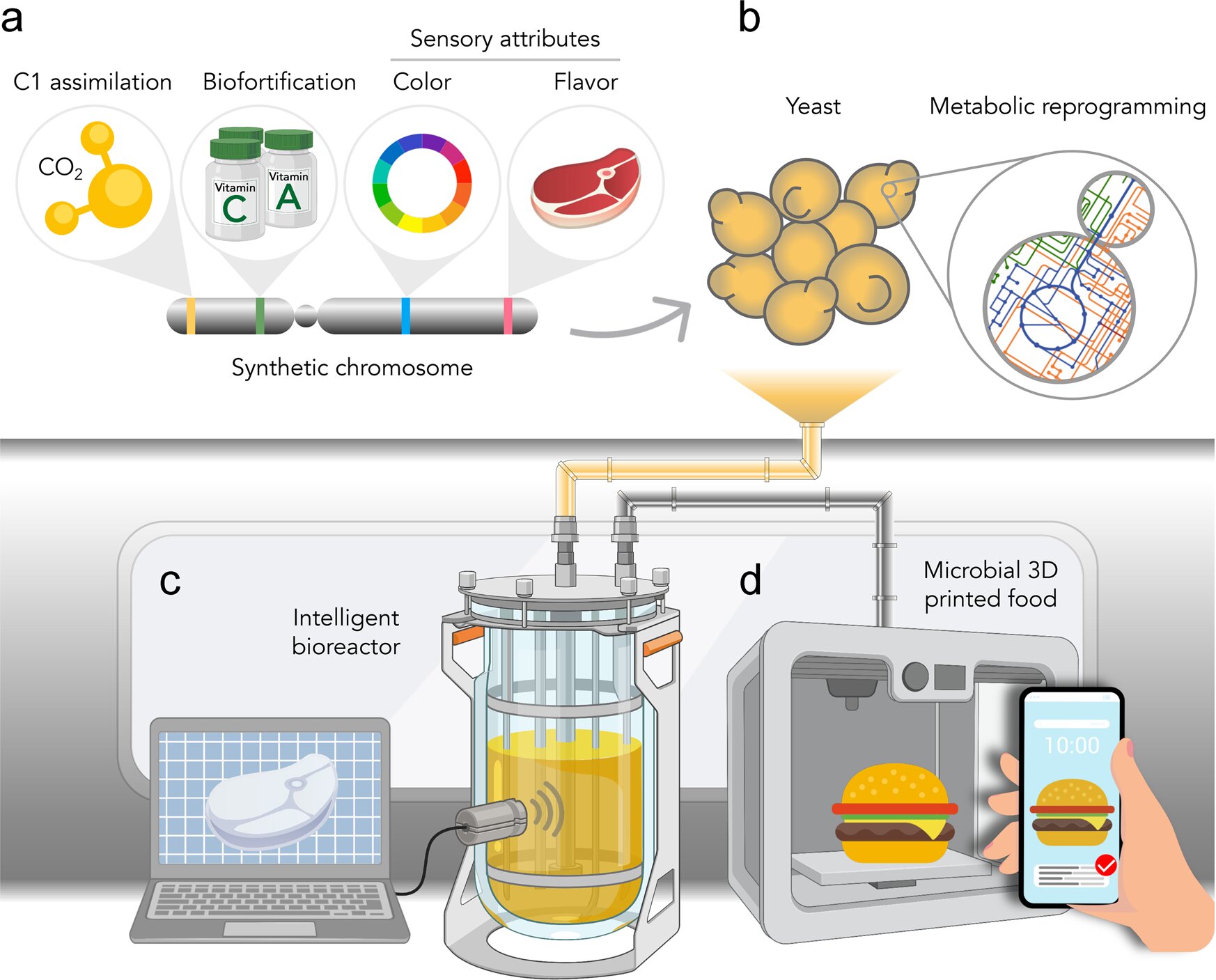The future of space food: Using bioengineered yeast to feed humans off-Earth
Date: 7.11.2022
Take a common form of yeast, a 3D printer, and some clever science, and what do you have? A versatile and nutritiou s food system for tomorrow's discerning space traveler.
s food system for tomorrow's discerning space traveler.
Researchers from Macquarie University and the ARC Center of Excellence in Synthetic Biology outline a vision for a customizable food system that provides dishes with the taste, texture and nutrients of their Earth-bound counterparts.
The primary ingredient used in the space food system is the yeast Saccharomyces cerevisiae, a food-grade microorganism with thousands of years of usage in baking, brewing and wine-making. Yeast cells are already nutritious, containing substantial protein, carbohydrates, small amounts of fat, and most essential amino acids that humans require from food. With some engineering, S. cerevisiae can be further bolstered to add nutrients, taste, color, and texture.
"The best approach for sustaining extended human space ventures is to produce food on-site," says lead author Dr. Briardo Llorente from the School of Natural Sciences at Macquarie University.
Previous work has estimated that all vitamins and macronutrients necessary for a balanced human diet could feed 50–100 people a day from one 3,000 liter fermentation tank, making S. cerevisiae a promising candidate for developing into a microbial food-production system.























